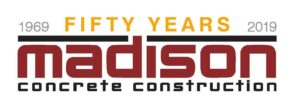Although associations have always existed to help us advance our industry, teach us the latest trends and provide a network of colleagues, their role in current times may be more important than ever. In addition to opening doors and providing a variety of opportunities to help us grow both personally and professionally, in today’s unprecedented times, they are stepping in to provide many needed resources.
Through continuing education classes and webinars, as well as online tools and resources, associations are helping provide immediate and impactful benefits and services to their members. To this end, we assembled a list of resources available from some of our valued associations:
- American Concrete Institute (ACI) offers online certification training programs as well as digital on-demand access to ACI content.
- American Society of Concrete Contractors (ASCC) is currently offering a number of webinars throughout May, June and July.
- Associated Pennsylvania Constructors (APC) provides educational offerings such as Weekly Online Updates and the APC Speaker Series to their members.
- General Building Contractors Associations (GBCA) offers members workforce development and educational programs. Visit their Upcoming Events page to see topics they will be covering.
Madison is also very active in the Mid-Atlantic Safety Council and Subcontractors Association of Delaware Valley. We encourage you to reach out to these two organizations directly to see if they are offering online resources!
With everyone taking a hard look at expenses right now, it is key to use the resources available through your local, state and national associations. Now is a great time to take advantage of your membership dues and reconnect with your associations. Need help deciding how you can make the most of your association membership? Reach out to their membership department with your questions.

